 July 27th marked the initial meetings of four recently created LPMN interest groups: Birds, Plants, Herps and Bugs. These groups are led by experienced naturalists (Carroll Moore-Birds; Liz Pullman-Plants; Bill Brooks-Herps; and Ronnie Lanier-Bugs) and are open to any chapter member who has an interest in these areas.
July 27th marked the initial meetings of four recently created LPMN interest groups: Birds, Plants, Herps and Bugs. These groups are led by experienced naturalists (Carroll Moore-Birds; Liz Pullman-Plants; Bill Brooks-Herps; and Ronnie Lanier-Bugs) and are open to any chapter member who has an interest in these areas.
 The purpose depends on your perspective. First, as a naturalist, it is to learn more about what you enjoy. From a slightly larger perspective, it is to provide an expanded source of volunteer and advanced training opportunities. From the loftiest view, it is to sow the seeds of synergy among our own activities and those of the greater communities we serve. More on this later.
The purpose depends on your perspective. First, as a naturalist, it is to learn more about what you enjoy. From a slightly larger perspective, it is to provide an expanded source of volunteer and advanced training opportunities. From the loftiest view, it is to sow the seeds of synergy among our own activities and those of the greater communities we serve. More on this later.
 A first meeting is always the most awkward, but already there are homework assignments bouncing around, show-and-tells in the works, classes being organized and field trips being discussed. Group size varies, with Bugs currently the smallest—an actual advantage, according to Ronnie Lanier. Liz has the largest group—the Plant group (and, therefore, the most unruly); Carroll’s Bird group is next with some exceptional talent in his “student body,” and Bill’s Herp group carries a mysterious attraction. It will be interesting to watch how the size of the groups change over time. Given such different personalities of the leaders, it’ll also be fun to observe the directions they take. Will they develop their own group names? Will they throw their own parties and socialize? Will they collaborate with one another? Will they specialize into subgroups? Which will amass the most volunteer hours? The most advanced training hours? Hmmm.
A first meeting is always the most awkward, but already there are homework assignments bouncing around, show-and-tells in the works, classes being organized and field trips being discussed. Group size varies, with Bugs currently the smallest—an actual advantage, according to Ronnie Lanier. Liz has the largest group—the Plant group (and, therefore, the most unruly); Carroll’s Bird group is next with some exceptional talent in his “student body,” and Bill’s Herp group carries a mysterious attraction. It will be interesting to watch how the size of the groups change over time. Given such different personalities of the leaders, it’ll also be fun to observe the directions they take. Will they develop their own group names? Will they throw their own parties and socialize? Will they collaborate with one another? Will they specialize into subgroups? Which will amass the most volunteer hours? The most advanced training hours? Hmmm.
 We are only on the ground floor, but as you can see, the train is leaving the station. Now, about those synergies . . . What’s to prevent group members from helping educate hike leaders for upcoming hike seasons? Cannot these groups present future chapter meeting/training classes? Why can’t we volunteer to do census work for the parks, the Colorado River Refuge, McKinney Roughs and the Pines and Prairies Land Trust? Doesn’t it make sense for some members of our groups to naturally join other specialized groups outside the LPMN, i.e., Native Plant Society, Horned Lizard Society, etc.? Isn’t it possible for these groups to apply expertise to members’ private property (potential volunteer time, social gatherings, help each other out)? Can this not provide entrée to our home schooling program, Lockhart ISD 5th graders and other “community” outreach efforts? Anybody see a fit here with our embryonic Junior Master Naturalist program? Synergy: making things stronger by pooling resources.
We are only on the ground floor, but as you can see, the train is leaving the station. Now, about those synergies . . . What’s to prevent group members from helping educate hike leaders for upcoming hike seasons? Cannot these groups present future chapter meeting/training classes? Why can’t we volunteer to do census work for the parks, the Colorado River Refuge, McKinney Roughs and the Pines and Prairies Land Trust? Doesn’t it make sense for some members of our groups to naturally join other specialized groups outside the LPMN, i.e., Native Plant Society, Horned Lizard Society, etc.? Isn’t it possible for these groups to apply expertise to members’ private property (potential volunteer time, social gatherings, help each other out)? Can this not provide entrée to our home schooling program, Lockhart ISD 5th graders and other “community” outreach efforts? Anybody see a fit here with our embryonic Junior Master Naturalist program? Synergy: making things stronger by pooling resources.
Didn’t know about these groups? Well, now you do. Get in contact with one of the group leaders; go to a meeting or participate in a field trip – check them out. Got something to offer? Offer it. Help us make these programs soar! Contribute, participate, invest some of your time, get involved.
Don’t see an interest group that turns your crank? Heck, we’re just getting warmed up. Create one! All it takes is common interest; the chapter is here to support you, our environment, the community and to improve our knowledge of the natural resources within Bastrop and Caldwell counties. So why not go for it?
Post your comments, opinions, ideas, experiences about/with these interest groups . . . good, bad and in between. Folks will read what you write, respond, and before you know it, you will have sparked a brilliant new idea, got something changed, added flare. Like Lowe’s, let’s build something together!


